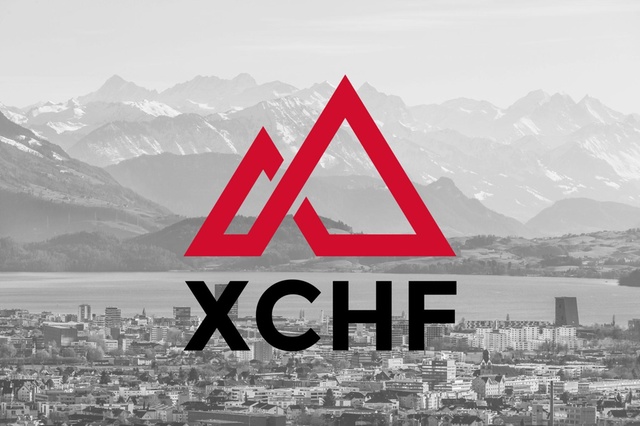
Stable coins are proliferating as a means to counter the effects of huge price swings of cryptocurrencies.
A new bond has been launched in Switzerland to help investors and blockchain start-ups escape the volatility of cryptocurrencies. Issued by Swiss Crypto Tokens, the bond is a representation of the safe haven currency on the blockchain.
The first 10 million units of the bond, each worth a franc and pegged to the Swiss currency, are sold out and will be issued on Thursday. Investors have snapped up the digital XCHF token units, which are linked to the bond with digital smart contracts.
XCHF joins a growing legion of so-called stable coins that are designed to mitigate the massive fluctuations in the value of cryptocurrencies, such as bitcoin (see box below). Earlier this week, crypto trading platform Smart Valor said it plans to launch a franc-pegged CHFt tokenexternal link.
Both stable coins have the ambition of encouraging more people to invest in the blockchain industry, thus increasing liquidity in the growing market. Blockchain start-ups have raised billions of dollars worldwide in the last two years through a new form of crowd investing known as initial coin offerings (ICOs).
A large chunk of funds invested in these companies has come in the form of cryptocurrencies. The problem for both investors and start-ups is the exaggerated yoyoing in their value. A sudden fall in price would destroy the value of a company’s newly acquired capital. And investors don’t want to see the value of bitcoin rise after they have spent them.
Flashback
The answer, according to Swiss Crypto Tokensexternal link, is to buy crypto bonds that only fluctuate within the band of the Swiss franc. Every bond-linked token that is bought for a franc can be later redeemed for a franc. Investors can use either CHF, bitcoin or ether to buy bond units.
These bonds could then be used to invest in start-ups or to simply park bitcoin away from market volatility.
“Volatility has become an obstacle to the wider adoption of cryptocurrencies. In general, an effective currency should at least function as a medium of exchange and a store of value,” stated Armin Schmid, CEO of Swiss Crypto Tokens, which is majority owned by crypto financial services company Bitcoin Suisseexternal link.
Bitcoin Suisse director Luzius Meisser likened the creation of CHF-backed stable coins to a digital version of the pre-central bank era. This was a period when individual Swiss banks minted their own currencies.
Swiss law now prohibits the private printing of CHF notes or coins, but allows for the creation of virtual money, Meisser explained. “You don’t need an e-money license as you do in the European Union,” he told swissinfo.ch. This makes the creation of fiat-backed cryptocurrencies easier in Switzerland than in other countries, he said.
Issuing XCHF tokenised bonds requires no license from the regulator, he added. But any platform that lists the bonds for trading would need a securities trading license.
Stable coins
The first bitcoin transaction in 2010 saw two pizzas being bought for 10,000 bitcoin. Last December 10,000 bitcoin were worth $200 million (CHF200 million), but the price plummeted a few weeks later to $65 million. Such volatility holds back mass adoption of cryptocurrencies.
The holy grail is finding a cryptocurrency that retains its value to the same degree as traditional currencies. There are more than 100 projects worldwide trying to achieve this end, according to experts. They can be broadly broken down into three categories:
The first includes cryptocurrencies that are pegged to traditional currencies, among them XCHF and CHFt, which follow the Swiss franc. Earlier this year, Scenic Swisscoast launched a private currency linked to the franc that can only be spent using the blockchain firm’s services. Alprockz also has a franc-pegged project called ROCKZ, while Swiss Longevity Holding has plans to launch a stable coin called SWIS.
Other stable coins are linked to physical commodities, such as oil or metals. In February, Venezuela created the Petro which is linked to the country’s mineral reserves. In Switzerland, Tiberius Coin is backed by a range of metals.
The third option is to use algorithms that automatically alter the supply of the stable coin once it inflates or deflates in value. Swiss project Forctis is developing the ARES token which can be adapted to represent any asset. The GenS stable coin, embedded into ARES, employs algorithms that keeps the value stable.
Tags: newsletter,Sci & Tech




























